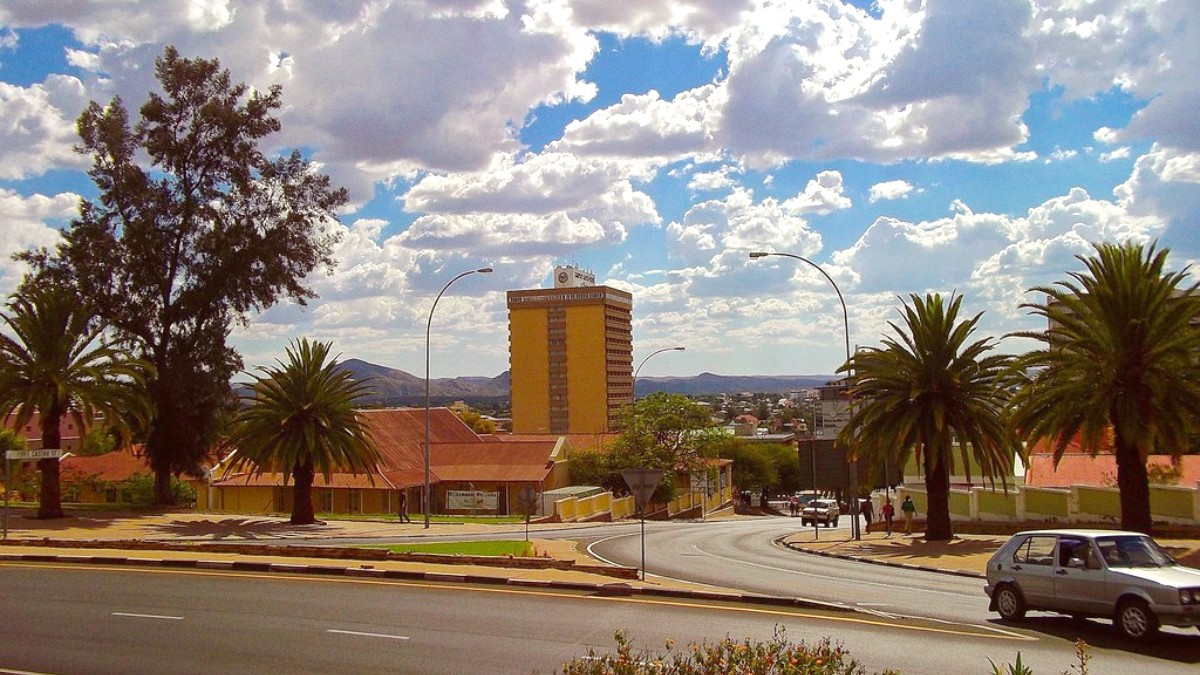
Namibia
Summer (December - March): Pack lightweight, breathable clothing. Materials like cotton and linen work well. Loose-fitting long sleeves and pants offer good sun protection and help deter mosquitoes in the evenings. A Light rain jacket stands useful for sudden, intense thunderstorms. Evenings remain warm, but a light cover-up sometimes feels welcome.
Winter (June - August): Layers are central for these months. Bring a warm jacket, fleece, and sweaters for evenings and early mornings when temperatures drop significantly. Pack Long-sleeved shirts for daytime. A Warm hat and Gloves come with recommendations for cold nights, especially in July. Daytime temperatures stand pleasant, so a t-shirt or light shirt often works during the day.
Comfortable walking shoes or Athletic sneakers are suitable. Walking surfaces include paved sidewalks and potentially uneven areas.
Sandals or flip-flops work for casual wear around your accommodation or for short strolls. Ideal for relaxed settings.
Closed-toe shoes stand for evening outings to guard against insects and for general comfort. If driving extensively, comfortable driving shoes are important.
Maintaining document organization and security is a top priority. Carry both physical and digital copies of everything important.
Power: Namibia uses 230V, 50Hz electricity. Plug types are Type D (three large round pins in a triangle) and Type M (three large round pins, similar to Type D but larger). South African adapters (Type M) are common. A Universal travel adapter with Type D/M compatibility stands as a strong recommendation.
Camera Equipment: A good camera captures Windhoek's unique character and Namibia's landscapes. For safaris (common day trips or extended tours from Windhoek), a camera with a good zoom lens helps with wildlife photography. Bring extra batteries and sufficient memory cards.
Consider NordVPN or ExpressVPN for secure browsing and data protection while traveling.
For camera and electronics needs, B&H Photo presents a resource.
Airalo presents eSIM options for seamless international mobile data.
A well-stocked health and wellness kit gives comfort and addresses minor issues. A comprehensive Travel first aid kit forms a good base. Carry all prescription medications in their original packaging. Bring a copy of the prescription and a doctor's note explaining their necessity, especially for controlled substances. Pack enough medication for your entire trip plus a few extra days.
Windhoek's altitude (1,700m) sometimes causes mild altitude sickness (headaches, mild nausea), though it rarely presents as severe. Remedies like ibuprofen assist with headaches. Motion sickness appears on long, winding roads outside the city. A First aid kit from Adventure Medical Kits could be helpful.
Your planned activities define specialized gear. For hiking, sturdy Hiking boots or shoes provide comfort and support on trails. A daypack carries water, snacks, and extra layers.
For wildlife viewing (if extending to safari), binoculars significantly enhance spotting. A camera with a good zoom lens captures distant animals. Neutral-colored clothing also stands advisable for safaris. A good pair of Compact binoculars counts as a useful item.
For extensive safari gear (e.g., high-end camera lenses, specialized camping equipment), local rental from specialized outfitters is an option. For general items, bringing your own is typically more convenient and reliable. Assess cost and quality differences.
These items contribute to comfort, security, and general convenience. A Travel neck pillow, Eye mask, and Earplugs provide more comfortable long flights or bus journeys. A money belt or an RFID-blocking wallet presents discreet security for valuables like passports, cash, and credit cards. A Small padlock for luggage or hostel lockers brings an extra layer of security. Pacsafe for anti-theft bags.
A reusable water bottle minimizes plastic waste and saves money (Windhoek tap water is drinkable). A Reusable shopping bag is handy for markets or grocery runs. Consider Reusable utensils to minimize plastic use while eating on the go. Wet wipes or Hand sanitizer are always useful, especially when moving or visiting places with limited washing facilities. A Quick-drying towel also comes in handy. Dust-proof bags for electronics are strongly recommended if visiting the desert.
Biodegradable soaps, solid shampoos.
For small electronics.
Reduce paper waste.
Choose items with less packaging.
Pack a small, Lightweight daypack for daily excursions. This holds water, snacks, sunscreen, and any items you buy.
Consider packing an universal drain plug for hotel sinks if you plan to do laundry.